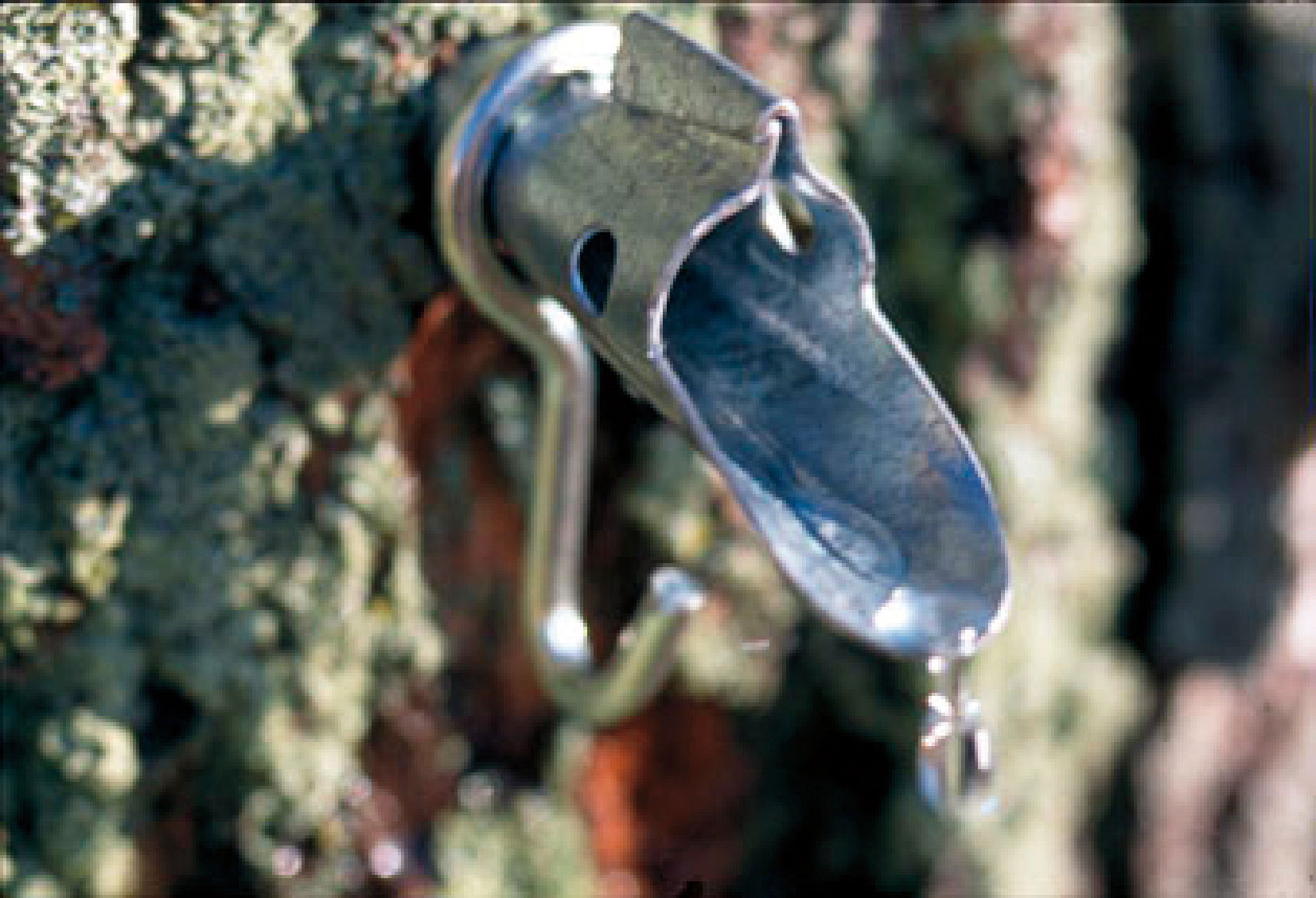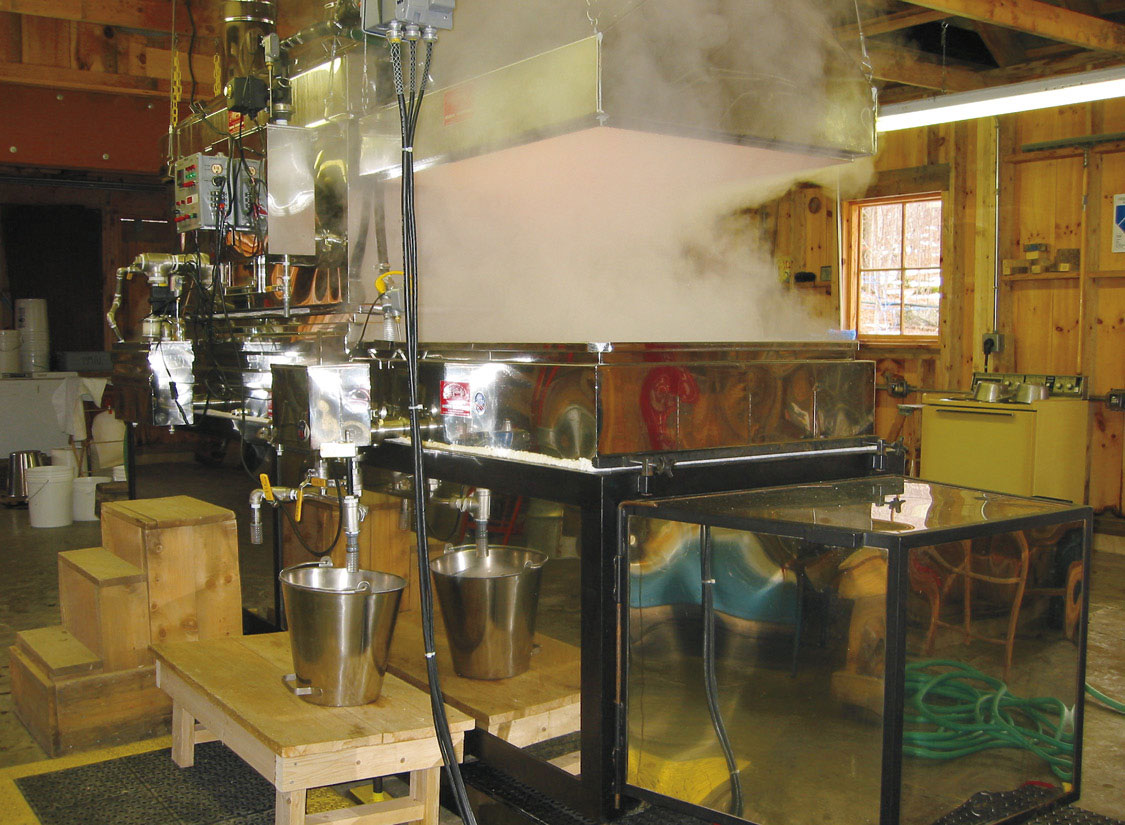Basics of Maple Syrup Production – Indiana
Maple syrup productions often stirs memories of a simpler time in American where almost every landowner was making syrup or sugar cakes to use as their source of sweetener throughout the year. Or it may just stir your sweet tooth and desire for some “Pure Maple Syrup.” Syrup production can be conducted on many scales of size whether you have 50 taps or 50,000 taps the process is the same. It is just more work before, during and after the season the larger the operation. Maple sap flows best when temperatures drop below freezing at night and rise into the 40s during the day. If you are wanting to get involved with maple syrup making, there are some basics you should look into:
Maple sap flows best when temperatures drop below freezing at night and rise into the 40s during the day. If you are wanting to get involved with maple syrup making, there are some basics you should look into:
• Talk to producers around your area. There is tremendous value in talking to folks already producing syrup. Maybe you can sign on to be a helper to obtain more hands-on knowledge. You may be able to take your sap to another producer to boil if you don’t have all the equipment.
• Join the Indiana Maple Syrup Association to learn from the members and programs they organize. www.indianamaplesyrup.org/ At Association events, you will meet other maple producers and enthusiast that are great resources for learning from and sharing knowledge with. The price of the membership will pay you back in help, product promotion, and production practices to help your operation as well as staying on top of what regulations are for producing maple syrup.
• Get to know your sugarbush (name for the woods where sap will be collected) long before you start tapping trees. Summer is a great time to study your woods and your maple trees. Mark the sugar maple (Acer saccharum) trees that are of tapping size. Also determine how you will collect sap either with buckets or tubing if going that route. You can tag Red Maple (Acer rubrum) and Silver Maple (Acer saccharinum) trees too, but know that taps in these trees will need to be pulled a week or two before the Sugar maple taps. Red and silver maples will break open their buds a week or two ahead of sugar maples. When this happens the syrup taste bad due to the release of different carbohydrate compounds the tree sends to the buds to help them break open into leaves.
• Implement good forest management practices. This does not mean cut down everything but the maples. A monoculture (one species) is never a good management practice. Work with a forester to make decisions of what should be cut out to allow the maples to grow better and even what maple trees need to be cut down. Yes, cutting down some maples will make the rest grow better. It is called “Crop Tree Release” and there are many online information sources to read more about it. The health, longevity, and future of your maple syrup hobby or commercial operation starts within the woods. You make money in the woods with proper management practices, you spend money in the sugarhouse on shiny things you may not need.
• Buying equipment. This is the largest cash layout to getting started in maple syrup making. I highly suggest before you buy one piece of equipment you talk to multiple dealers and maple producers who have different types and different manufacturers of maple production equipment. There is no one best brand (equipment dealers will disagree with me) but they all do the same thing. Some do it slightly different giving faster production or more efficiency. Learn what people like and dislike about the equipment they have. Don’t get caught up in the maple syrup disease I refer to as “shiny-gadget-syndrome.”  Excess water is boiled from the sap to make syrup. It takes about 10 gallons of sap to make 1 quart of syrup.Many folks spend a lot of their time and money in the sugarhouse with shiny things that may or may not increase the bottom line. But as I said above maple syrup production starts in the woods.
Excess water is boiled from the sap to make syrup. It takes about 10 gallons of sap to make 1 quart of syrup.Many folks spend a lot of their time and money in the sugarhouse with shiny things that may or may not increase the bottom line. But as I said above maple syrup production starts in the woods.
• When looking into the many choices in equipment consider several factors. First, how many taps you’re going to start with versus the total if you tapped everything you have. Plan on expansion. I know so many people who bought a small evaporator thinking they are never going to tap more than 50-100 trees and get bit by the maple bug and next thing they have 500 taps or more and a small evaporator that requires more hours in the day then they have to dedicate to boiling hundreds of gallons of sap. Second, how much money do you have to spend? The larger the equipment the larger the price tag. Third, how much time do you have to devote to boiling sap? If you’re working a job and are a part-time maple producer, then you need to size your equipment needs so you will get some sleep and be able to do your regular job.
• Buyer beware when it comes to buying older equipment. Equipment manufactured before 1982 could still contain lead in the metal or soldering. Lead and maple do not go together. Maple sap and syrup is acidic and lead is a soft metal that can be dissolve into the syrup. If in doubt a lead testing kit available at the hardware store will tell you if equipment is lead based. Also soldered seams could be leaking or pin holes can cause problems. If buying it from a known source is better than an add in the paper with prices too good to be true.
• One of the most important pieces of equipment you will need to purchase is a Vermont Department of Agriculture certified accurate maple syrup hydrometer and a hydrometer cup. You may be asking, why a state certified hydrometer over one that is not certified and cheaper. I have tested hydrometers for over 20 years, and it is amazing how many I have found that are off (inaccurate). Typically, they read heavy, meaning if you boil to the red hot line you are going to make syrup that is too high of Brix’s (the amount of sugar in solution). This is bad, for one you are giving away sugar that you could sell. The syrup may turn into glass like crystals at the bottom of the container and that too is lost sugar. Secondly, if Brix are read too light, then you are not getting enough water boiled off and the syrup will be thinner and could spoil from not being at the proper density. A simple $40 dollar investment could return hundreds of dollars.
• Marketing your syrup needs to be part of the planning. If you’re only producing a couple gallons a year, then the big decision is with whom will you share it with. If you have free samples to hand out, you will have more friends and relatives than you previously knew of. If you are going to produce many more gallons then you have family and friends to give it to, you need to know how you are going to sell the product you make. Producers often say “show me how to make more money.” To them I say, show me your marketing plan and I can help. Too many people produce the product but don’t know how they are going to market it. Marketing your product properly will give you a net return far times more than just selling gallon jugs to whomever stops by the farmgate to get their fix of the sweet stuff. Do you want to make maple confections which will make you even more money per gallon of syrup? Making confections takes more time and you need a market to sell your product to once it is made. Also keep in mind, these confections have a shorter shelf life than syrup in the jug. This is an important step in the process of starting or expanding your maple syrup production operation. Maple production is a great opportunity to use resources (trees, time) not being utilized to their potential. Plus, locally grown food is the hottest market in the food industry. People are paying more attention to what they buy and where it is made. If they know it was made locally that is always a good selling point to market.
There is so much more that could be said about starting or increasing your maple operation. Work through these basic consideration before you get too far along. It will save you a lot of grief and money in the long run to do you homework first. Look to University resources for maple syrup production. Try to avoid peoples personal blogs of web resources, as they may not be giving good advice in all areas.
Resource Examples
• Getting Started With Small-Scale Maple Syrup Production: cpb-us-e1.wpmucdn.com
• Maple Sugaring: An Introduction To Small-Scale Commercial Production: https://mapleresearch.org
• Hobby Maple Syrup Production: https://geauga.osu.edu
Gary Graham is a Maple Production Specialist with Ohio State University Extension. He was recently inducted into the Maple Syrup Hall of Fame for his decades dedicated to maple syrup production in North America.
